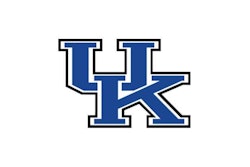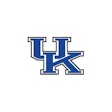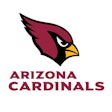Emotionally charged contract negotiations threaten the National Lacrosse League 2008 season.
How much leverage in contract negotiations do part-time players in a struggling league that supports an often-marginalized sport have? Players in the National Lacrosse League have twice tested that question, much to the vexation of some league owners.
In October, two days after the NLL administration announced that the 2008 season was to be cancelled due to an impasse in contract negotiations, Calgary Roughnecks owner Brad Banister told the Calgary Herald, "Of course I take it personally. It bothers me that some of these guys think I'm cheap."
At issue were player salaries among the league's 14 U.S. and three Canadian franchises. Owners were offering a five-year deal reflecting a three-percent increase over 2007 salaries, which were $6,880 for league rookies up to a $25,552 maximum for franchise players - a league average of about $14,500. The players' association rejected the deal, and reportedly sought more dynamic salary increases based on the financial success of the burgeoning league. Banister, for one, told the Herald he considered the rejection to be audacious.
He sarcastically described the league's recent salaries, along with owner-financed transportation and hotel accommodations, as just "a little better than the summer leagues they're used to playing in for $100 a game." NLL players have it so good, Banister told the paper, that on weekends, "they come in from their real jobs and they're treated like rock stars. Kids ask for their autographs. Girls chase them around bars. And they're willing to jeopardize that?"
Apparently so. This is the second time in four years that emotionally charged contract negotiations have threatened the existence of the league, which, like many professional leagues outside of the NHL, NBA, MLB and NFL, rely on the devotion of a small fan base. (Despite their rift, the NLL's franchise owners and players' representatives were ultimately able to iron out a seven-year salary deal - the terms of which were undisclosed as of this writing - saving the 2008 season.)
Formerly called the Eagle Pro Box Lacrosse League and, later, the Major Indoor Lacrosse League, the NLL was formed in 1987 and is the country's premier league for indoor lacrosse. The game is played on synthetic turf laid down over hockey rinks with the boards and glass left intact, thus distinguishing it from the less physical box lacrosse, which essentially brings outdoor field lacrosse indoors. The NLL describes the sport as being "like hockey on foot, with a lot more scoring."
In recent years, despite the moderate flux of franchises that seems to afflict most small professional leagues, the NLL has been making the kind of progress that suggests long-term financial sustainability. It has inked a multiyear sponsorship agreement with Reebok; its all-star and championship games have been broadcast on NBC and ESPN; and a majority of the franchises are now owned and operated by NHL or NBA teams and/or their respective arena owners. Attendance has been steadily on the rise, averaging more than 10,000 fans per game since the 2004 season (The all-time regular season game attendance high is 19,059, set at a 2005 game at the Air Canada Centre between the Columbus Landsharks and the Toronto Rock.)
Despite the league's apparent successes, its individual players - most of whom are Canadian - have little star power outside their hometown or the small community of indoor lacrosse. (One of the league's longtime standouts, for example, the Buffalo Bandits' John Tavares, daylights as a high school mathematics teacher.) "They look forward to that NLL check," former league player and current Towson University assistant lacrosse coach Shawn Nadelan told the Baltimore Examiner in the midst of contract negotiations. He said the extra income helps many players "make rent or car payments when they just graduated college and are trying to get their feet set."
Still, some owners have likewise noted the tenuousness of their position. As the latest labor dispute was still in full swing, Banister told the Herald that players "come in here for a couple days a week for four months and then they're gone. We're here every day, trying to make this franchise better."
Major League Baseball may still be feeling some effects from the standoff that led to the cancellation of most of its 1994 season. That sport's devotees could find little or no sympathy for either of the warring, and wealthy, parties. But the prevailing emotions in the wake of indoor lacrosse's latest contract skirmish seemed more tied to disappointment than to outrage. A.J. Johma, an assistant coach with the league's Edmonton Rush, told the Edmonton Journal, "Maybe this is a reality check for both sides to realize what the other side is all about."
































